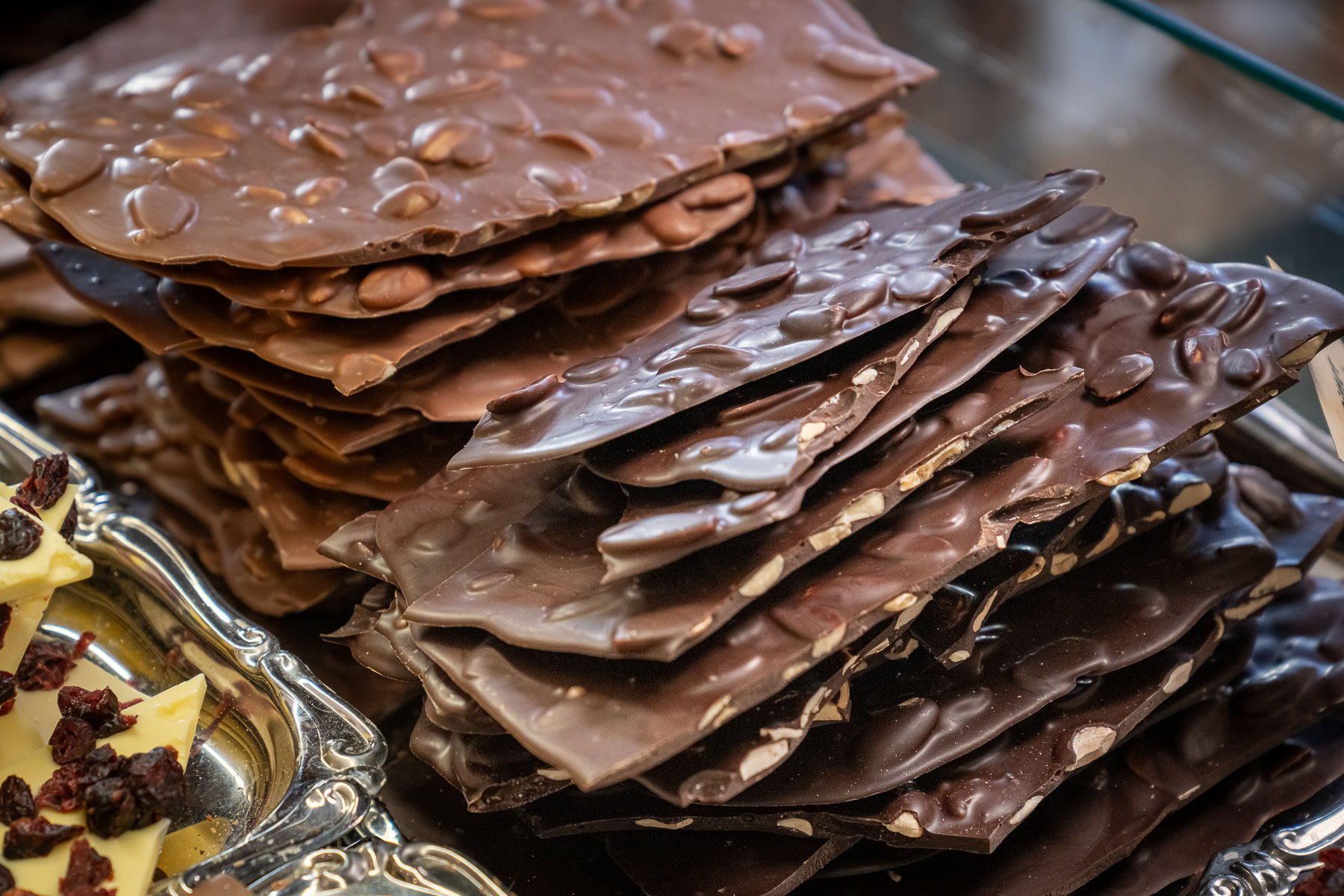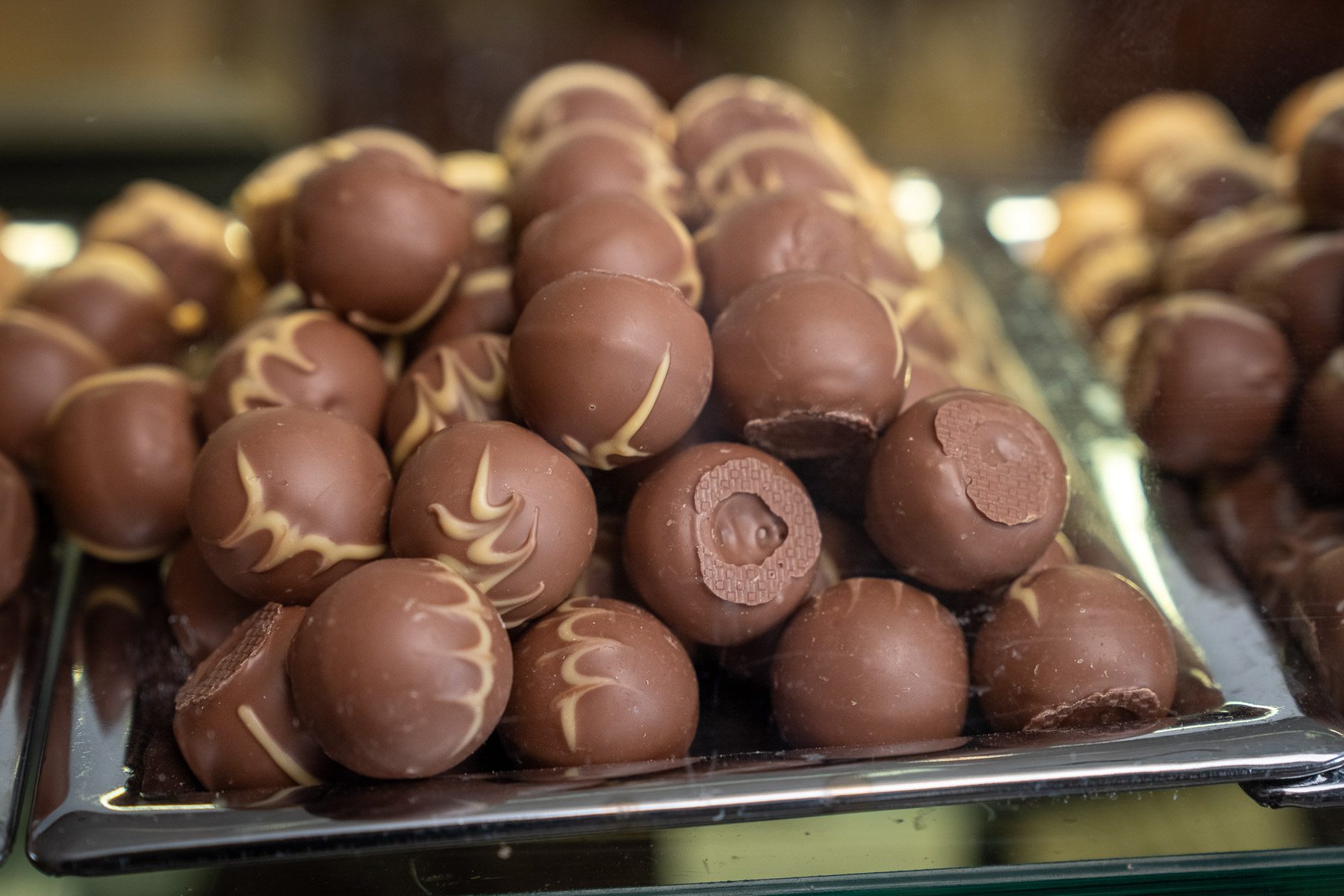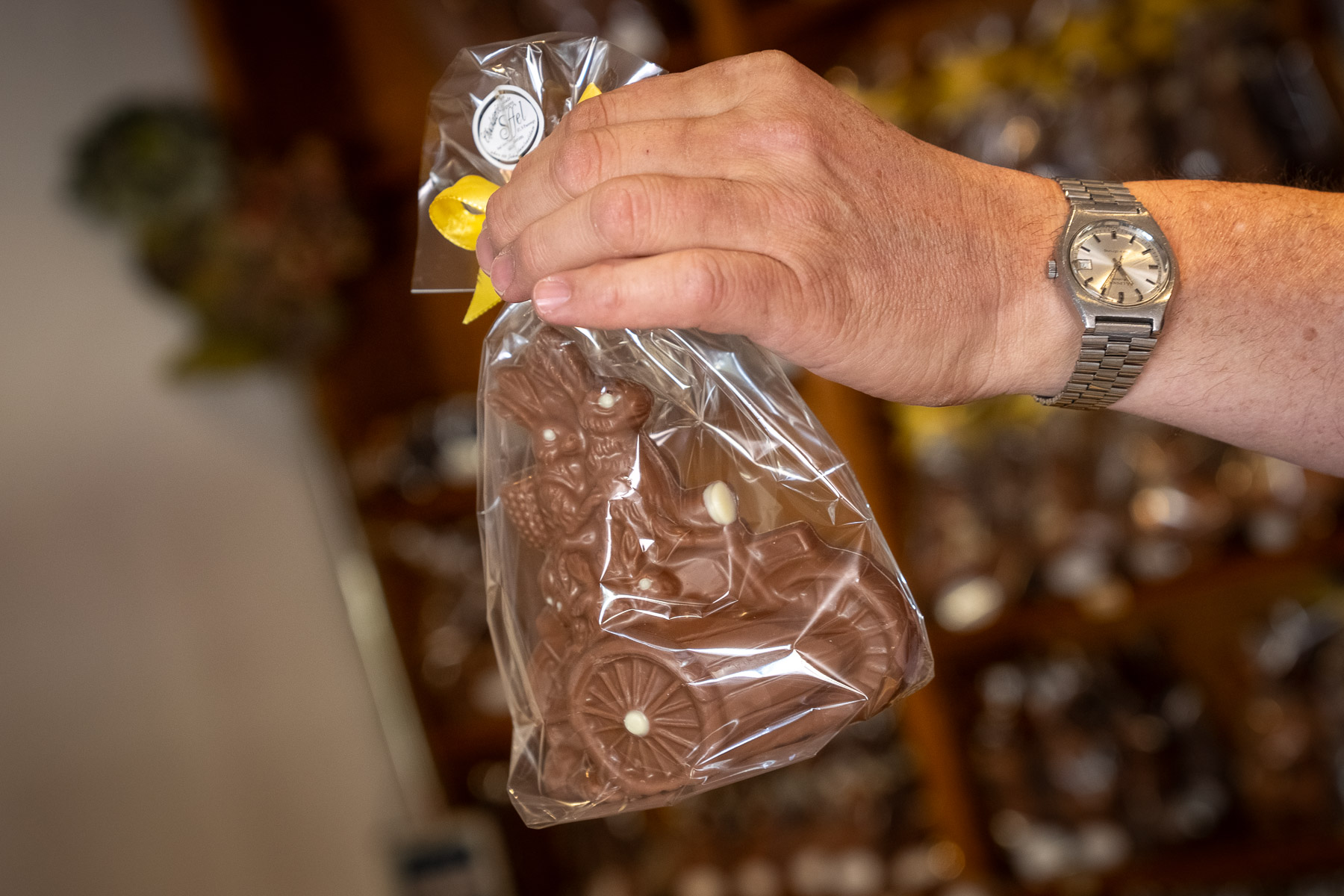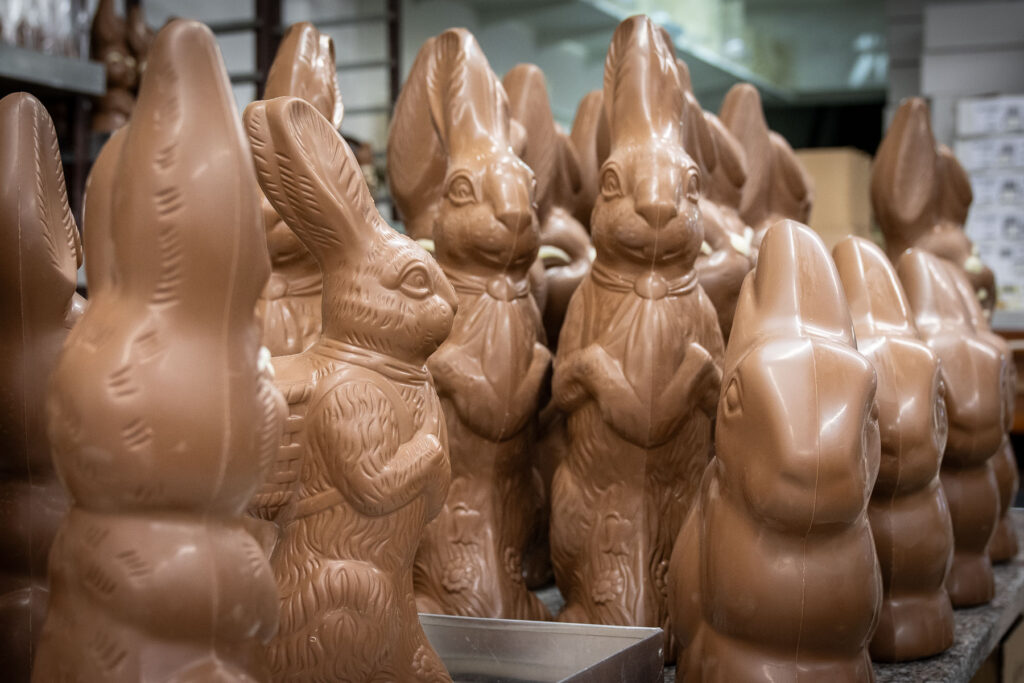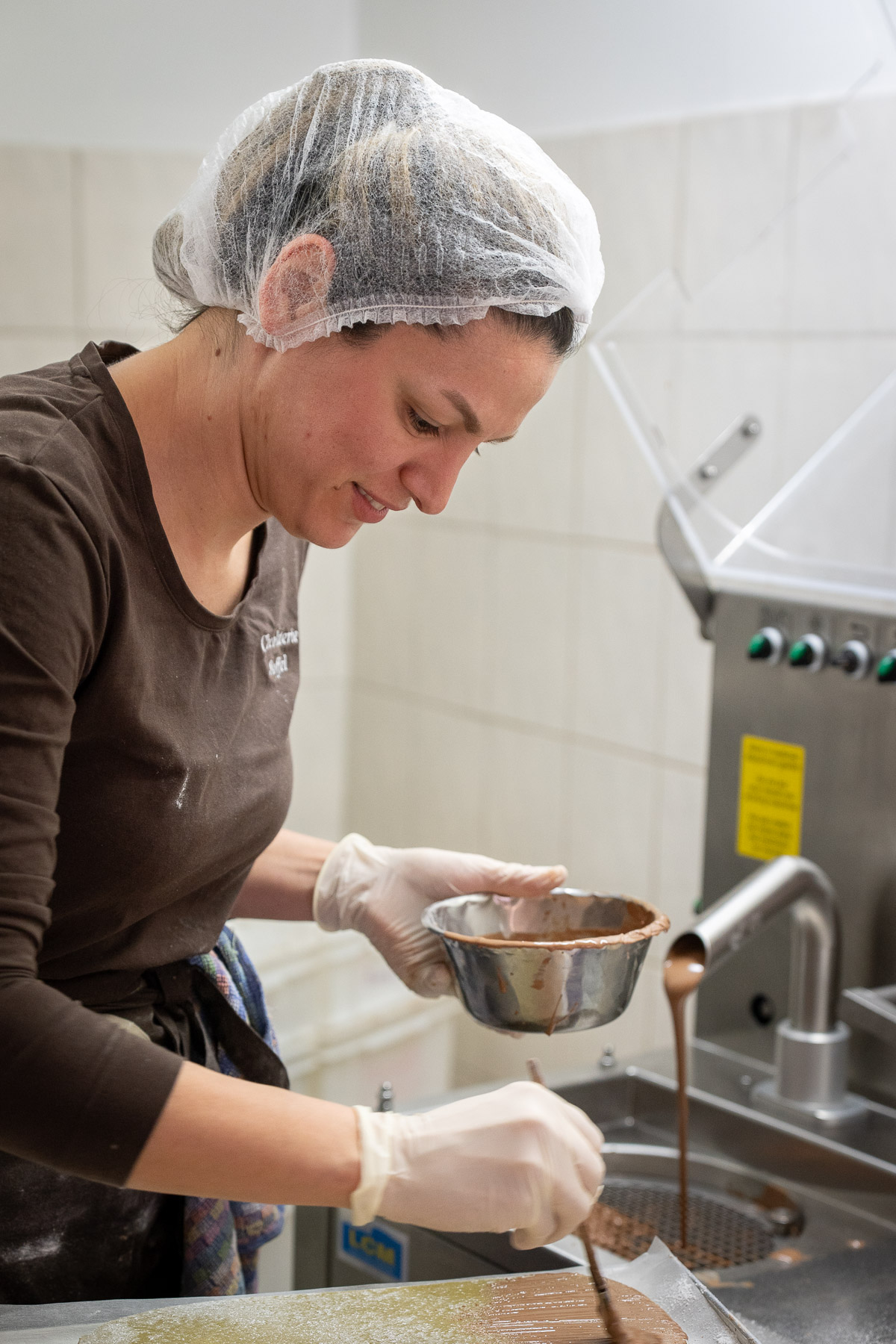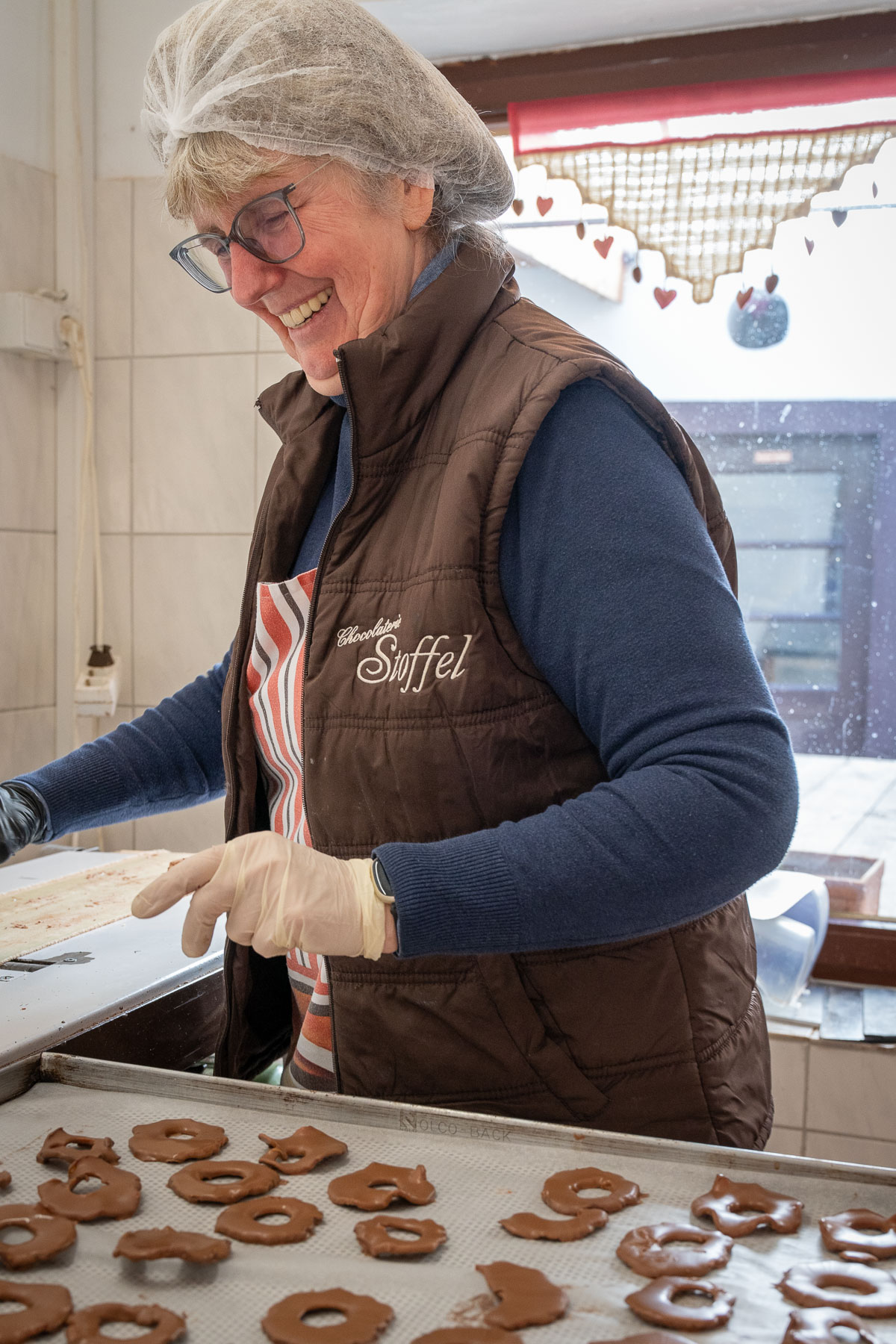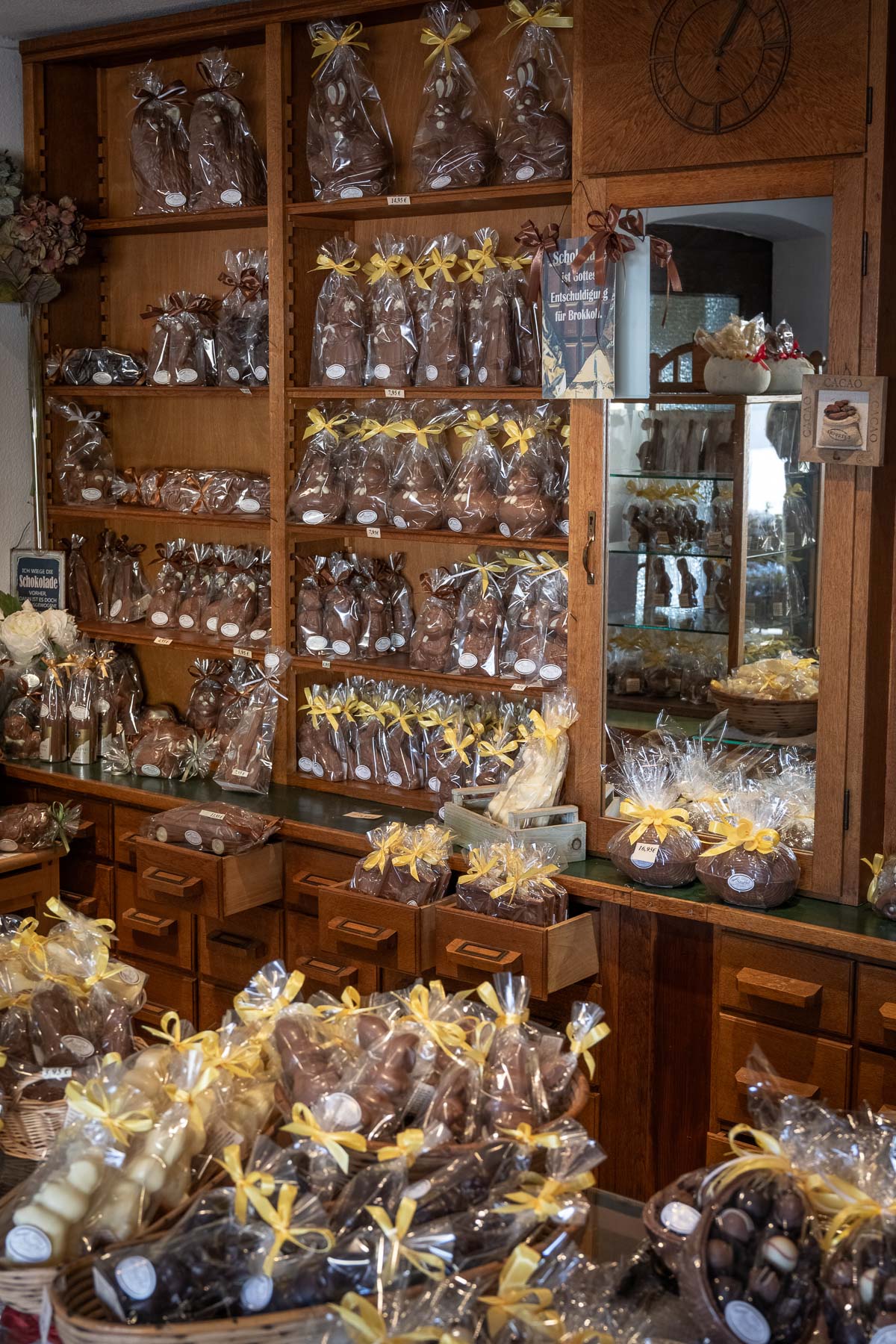“Chocolaterie Stoffel” in the Palatinate region creates delicious and unusual chocolate delights in the fifth generation—and not just at Easter!
It is getting really busy in the sales rooms of the chocolate factory in Bobenheim am Berg right before Easter. During the season the roller shutters go up at 9 o’clock sharp in the Palatinate shop. And you are immediately surrounded by the pleasant, delicate aroma of fine cocoa. Tiny bunnies made of milk chocolate, extra fine milk chocolate or white chocolate, Easter bunnies on motorcycles with and without sidecars or entire long-eared families are on display in the shop window and on shelves and showcases furnished in warm wooden shades ready to fulfil their duty in the Easter nest. The largest bunny model measures a mighty 63 centimetres. Furthermore, you can find eggs made from light, dark, white or pink chocolate with a wide range of fillings. And for whom this assortment does not suffice, countless varieties of broken chocolate from chilli to caramel or decorated with all kinds of nuts are on offer, too.

They weigh between a feather-light 15 grams and a whopping 2.5 kilos—Jan Stoffel produces more than 120 different Easter bunny variants in all sizes. His family has been running the business for more than 125 years and is now in the fifth generation, with Jan acting as its managing director, chocolatier and creative mind. At the age of 80, his mother Ingrid is still behind the counter every day during the season. Here, she offers the sweet delicacies made by nine employees with great charm and vast expertise. The Stoffel family has also been selling its fine chocolates in the Heinrich-Vetter-Passage in Mannheim for 30 years now. One of the highlights there is the two-metre-high chocolate fountain in the shape of Mannheim’s famous water tower. Shop furnishings and cash register are more than 100 years old.
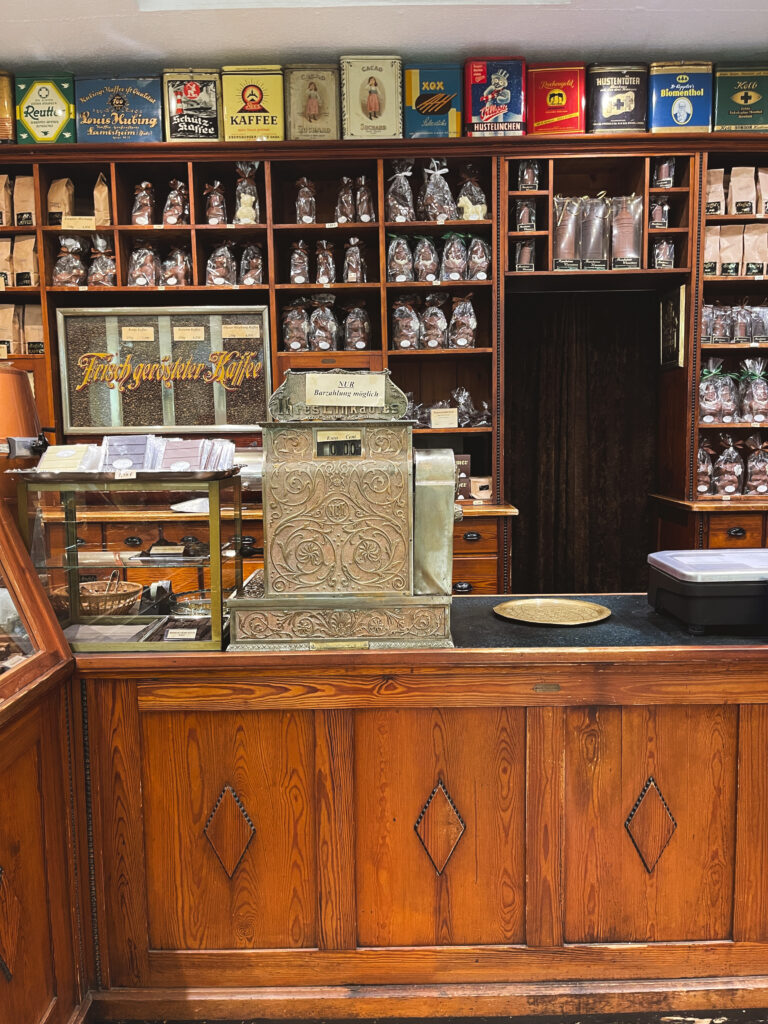
The various models of shiny, deliciously smelling chocolates and truffles are produced in the outbuilding of the great-grandfather’s former winery in the Palatinate. In addition to countless chocolate moulds, the most delicious ingredients are piled up there: candied and dried fruit, colourful chocolate lentils, marzipan, freshly roasted nuts or freeze-dried strawberries for colouring pink chocolate. Liquid chocolate flows continuously from a stainless steel chocolate fountain, used for coating chocolates and fruit by hand. Bunnies are also hand-painted here with white chocolate.



